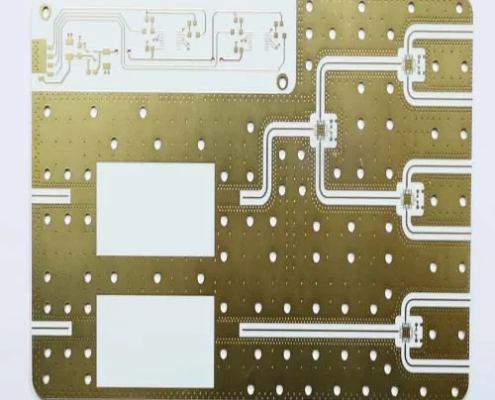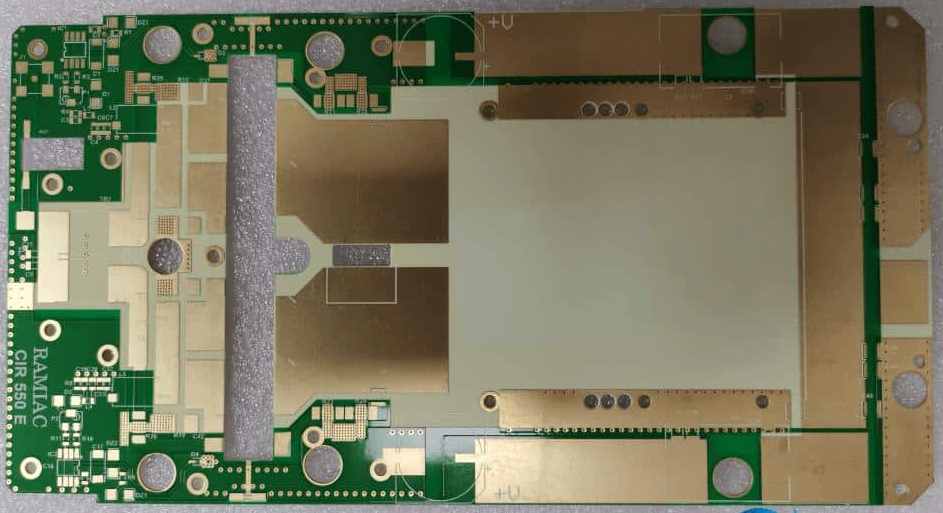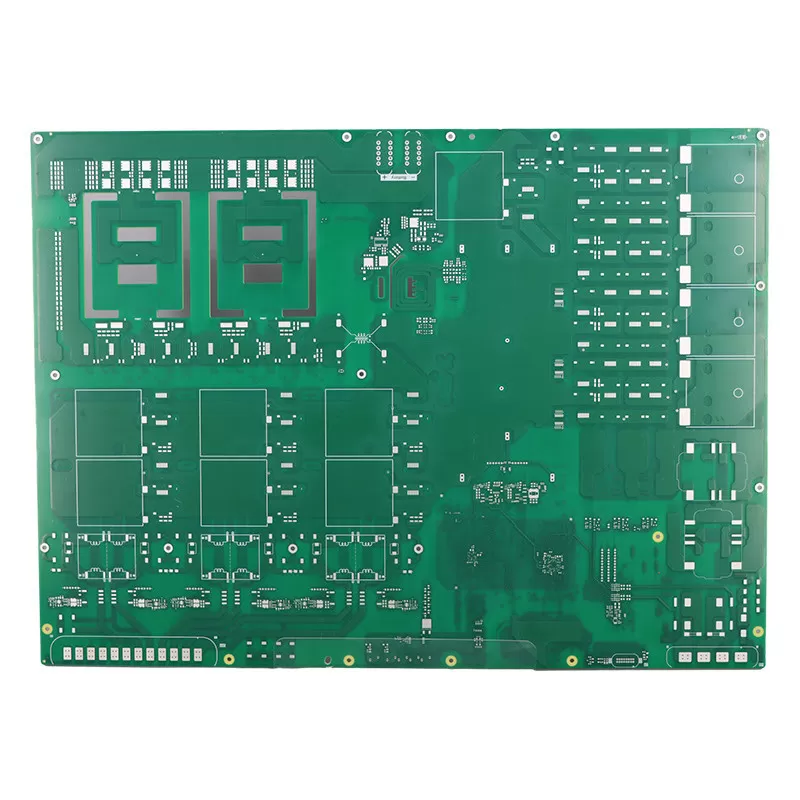Rogers 4003C vs. 4350B: Understanding the Differences
In today’s rapidly advancing electronics industry, the significance of high-performance materials like Rogers 4003C cannot be overstated. As a leading substrate material, Rogers 4003C plays a pivotal role in enabling the development of cutting-edge electronic devices and systems. Its exceptional properties, including precise dielectric constant, low loss tangent, and excellent thermal stability, make it indispensable for a wide range of applications, from high-frequency RF circuits to microwave components. In this blog, we will delve into a comprehensive exploration of Rogers 4003C, examining its features, comparing it with alternative materials, discussing its technical specifications, exploring its diverse applications, analyzing market trends, and envisioning its future prospects in the ever-evolving landscape of electronic engineering.
Overview of Rogers 4003C
What is Rogers 4003C?
Rogers 4003C is a high-performance dielectric composite material designed for radio frequency (RF), microwave, and high-speed digital applications. It belongs to the RO4000 series developed by Rogers Corporation, which is widely used in telecommunications, aerospace, automotive radar, and industrial electronics.
Unlike traditional FR4 materials, Rogers 4003C offers low dielectric loss, stable electrical properties, and excellent thermal performance, making it ideal for circuits that require low signal attenuation, controlled impedance, and high-frequency reliability.
Key Advantages and Features for High-Frequency Applications
Rogers 4003C is specifically engineered to provide consistent performance in high-frequency environments. Below are its most notable characteristics:
- Low and Stable Dielectric Constant (Dk = 3.38 ± 0.05 at 10 GHz)
- Ensures minimal signal distortion and consistent impedance across different operating frequencies.
- Suitable for high-speed signal transmission and microwave circuit designs.
- Low Dissipation Factor (Df = 0.0027 at 10 GHz)
- Minimizes signal loss, making it ideal for high-frequency RF and microwave circuits.
- Supports long-distance signal transmission with minimal power loss.
- Excellent Thermal Stability (Tg ~280°C)
- High glass transition temperature (Tg) ensures reliability under high temperatures and harsh environmental conditions.
- Performs well in automotive, aerospace, and satellite communication applications.
- Low Moisture Absorption (~0.04%)
- Reduces performance degradation in humid environments.
- Suitable for marine electronics, radar systems, and outdoor wireless communication devices.
- Superior Mechanical Properties
- Maintains dimensional stability even under mechanical stress.
- Compatible with standard PCB manufacturing processes, reducing fabrication costs.
- Compatibility with FR4 Processing Techniques
- Unlike other RF materials, Rogers 4003C can be processed using standard FR4 PCB manufacturing methods.
- Enables cost-effective fabrication of high-frequency circuits without requiring specialized processing techniques.
Material Composition
The performance of Rogers 4003C is directly influenced by its composition and structure. Unlike traditional FR4, which is based on woven glass-reinforced epoxy, Rogers 4003C is made from hydrocarbon ceramic-filled laminates, providing superior electrical and mechanical stability.
The performance of Rogers 4003C is directly influenced by its composition and structure. Unlike traditional FR4, which is based on woven glass-reinforced epoxy, Rogers 4003C is made from hydrocarbon ceramic-filled laminates. This unique composition provides superior electrical and mechanical stability, making it well-suited for high-frequency applications.
The hydrocarbon resin in Rogers 4003C ensures excellent dielectric properties and minimizes signal loss at high frequencies. This makes it ideal for applications that require consistent signal transmission and impedance control. The ceramic filler enhances thermal stability and improves dimensional control, reducing the risk of material deformation under varying temperatures. Additionally, glass fiber reinforcement contributes to mechanical strength and prevents warping under thermal and mechanical stress, ensuring long-term reliability in demanding environments.
How Material Composition Affects Electrical and Mechanical Performance
- Electrical Properties
- The hydrocarbon-ceramic composite ensures a stable dielectric constant across different frequencies, making it ideal for RF and microwave circuits.
- The low dissipation factor ensures efficient power transmission with minimal losses, which is crucial for antenna design, power amplifiers, and RF filters.
- Thermal and Mechanical Properties
- The ceramic filler provides enhanced thermal conductivity, improving heat dissipation in high-power applications.
- Rogers 4003C exhibits low thermal expansion (CTE ~17 ppm/°C), reducing the risk of delamination and mechanical failure in temperature-sensitive applications.
- Unlike FR4, it maintains consistent electrical performance even under high-temperature cycling.
- Manufacturing Compatibility
- Rogers 4003C can be processed using standard FR4 techniques, reducing the need for specialized PCB fabrication equipment.
- Its compatibility with typical soldering and plating processes simplifies integration into existing manufacturing lines.
Rogers 4003C vs. Rogers 4350B
While both Rogers 4003C and Rogers 4350B belong to the RO4000 series and are used in RF and microwave applications, they have distinct differences in dielectric performance, thermal properties, and cost.
| Property | Rogers 4003C | Rogers 4350B |
|---|---|---|
| Dielectric Constant (Dk) | 3.38 ± 0.05 (stable) | 3.48 ± 0.05 (higher, better for some RF designs) |
| Dissipation Factor (Df) | 0.0027 (lower loss) | 0.0037 (slightly higher loss) |
| Thermal Conductivity | 0.71 W/m·K | 0.69 W/m·K |
| Mechanical Strength | Good, but slightly lower than 4350B | Higher tensile strength and durability |
| Cost | Lower than 4350B | More expensive |
| Applications | Low-to-medium power RF circuits, antennas | High-power RF, radar, and military systems |
Rogers 4003C vs. FR4
FR4 is the most common PCB material, but it is not suitable for high-frequency applications due to its high dielectric loss and poor signal integrity.
| Property | Rogers 4003C | FR4 |
|---|---|---|
| Dielectric Constant (Dk) | 3.38 ± 0.05 (stable) | 4.0 – 4.7 (varies with frequency) |
| Dissipation Factor (Df) | 0.0027 (low loss) | 0.02 – 0.04 (high loss) |
| Signal Loss | Very low | High, especially at RF frequencies |
| Thermal Stability | High Tg (~280°C) | Lower Tg (~130-170°C) |
| Moisture Absorption | ~0.04% (excellent) | ~0.10% – 0.20% (can degrade performance) |
| Manufacturing | Compatible with FR4 processes | Standard PCB manufacturing |
| Cost | More expensive than FR4 | Lower cost |
| Applications | RF/microwave circuits, antennas, radars | General-purpose PCBs, low-frequency circuits |
Rogers 4003C Detailed Technical Parameters
When working with Rogers 4003C laminates, engineers should follow key design practices to ensure optimal performance in RF and high-speed applications. Here are some critical considerations:
- Use an impedance calculator (such as Saturn PCB Toolkit) to determine the appropriate trace dimensions for microstrip or stripline designs.
- Select the appropriate laminate thickness to achieve the desired impedance targets, ensuring consistent signal integrity.
- Model signal discontinuities such as short traces, vias, and bends to minimize impedance mismatches and signal reflections.
- Account for power and ground plane effects in impedance modeling to maintain a stable high-frequency response.
- Consider frequency-dependent dielectric constant (Dk) variations, as Rogers 4003C exhibits slight changes in Dk at different frequencies.
- Limit glass weave skew to within 5 degrees to avoid signal propagation inconsistencies in high-speed designs.
- Pay attention to resin starvation, voids, and thickness variations, as these can impact both mechanical reliability and electrical performance.
- Factor in Dk tolerances when budgeting for impedance variations to ensure manufacturing consistency.
By addressing these design factors, engineers can maximize the performance and reliability of Rogers 4003C in RF and high-frequency PCB applications.
Inquiry & Technical Consultation
FAQs About Rogers 4003C
What is the difference between Rogers 4003c and 4350b?
Rogers 4003C has a lower dielectric constant (around 3.38 at 10 GHz) compared to Rogers 4350B (approximately 3.48 at 10 GHz).
Rogers 4003C offers slightly different electrical and thermal properties, making it suitable for different applications than Rogers 4350B.
What is Rogers 4003?
Rogers 4003 is a high-performance thermoset composite material commonly used as a substrate for electronic circuits, particularly in high-frequency applications.
What is the thermal conductivity of Rogers RO4003C?
The thermal conductivity of Rogers RO4003C is typically around 0.50 W/m·K.
What is the dielectric constant of Rogers material?
The dielectric constant of Rogers material can vary depending on the specific grade. For example, Rogers 4003C typically has a dielectric constant of around 3.38 at 10 GHz.
What are the typical applications of Rogers 4003C?
Rogers 4003C finds applications in high-frequency communication systems, RF devices, antenna design, and more.
How does the dielectric constant of Rogers 4003C impact circuit design?
The dielectric constant influences signal propagation and impedance matching in RF circuits, affecting overall performance.
Is Rogers 4003C suitable for high-frequency RF applications?
Yes, Rogers 4003C’s low dielectric constant and low loss tangent make it ideal for high-frequency RF applications.
What is the maximum operating temperature of Rogers 4003C?
The maximum operating temperature typically depends on the specific grade of Rogers 4003C but is often around 130°C to 140°C.



